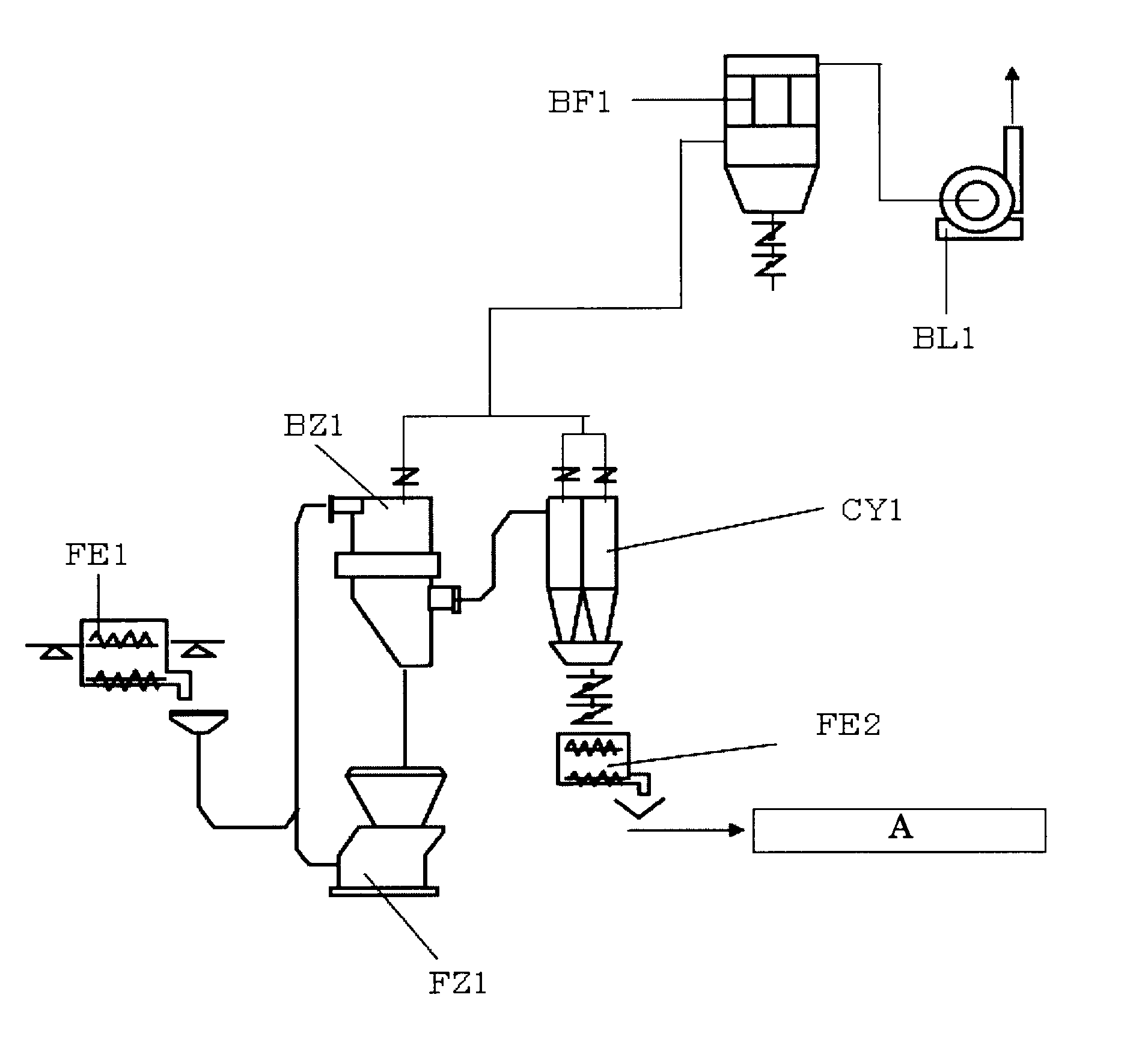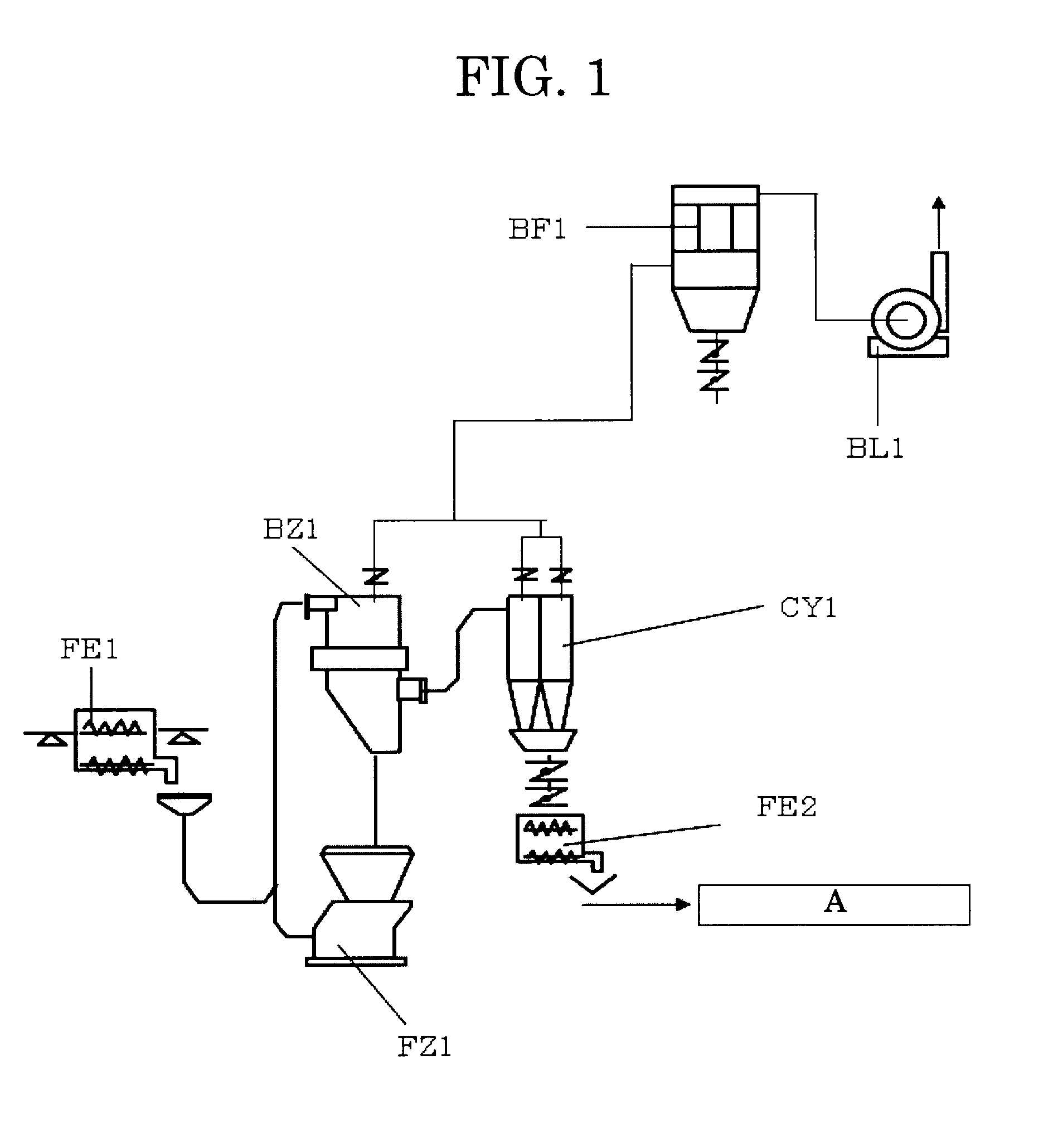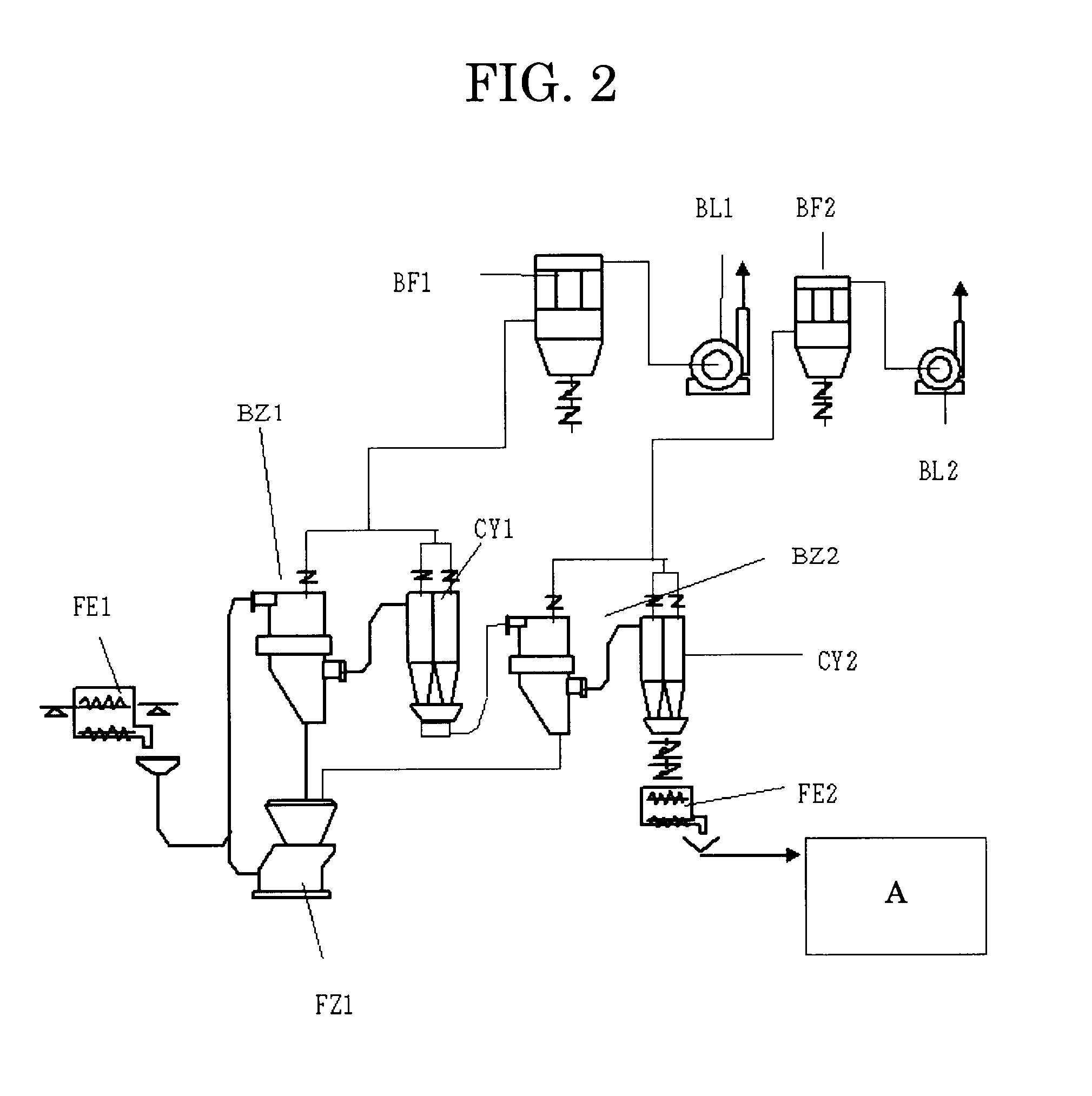Classifying apparatus, classifying method, toner and method for producing the toner
a technology of toner and classifier, which is applied in the direction of reverse direction vortex, instruments, developers, etc., can solve the problems of low classification efficiency of jet pulverizer, decreased classification accuracy, and decreased dispersion performance of conventional ds air classifying apparatuses, so as to improve classification efficiency and improve efficiency , the effect of smooth flow
- Summary
- Abstract
- Description
- Claims
- Application Information
AI Technical Summary
Benefits of technology
Problems solved by technology
Method used
Image
Examples
example 1
[0168]A powder material was classified with a classifying apparatus shown in FIG. 7 using a louver ring 6 set so as to satisfy the following: Distance R1=275 mm, Distance R2=260 mm, Angle α=25° and Angleβ=10°. In this louver ring, the thickness of each slat 5 was 4 mm and the number of slats 5 was 13. The obtained powder material was found to have a volume average particle diameter of 4.7 μm (measured according to the Coulter Counter method) and to contain coarse particles having a particle diameter of 8.0 μm or more in an amount of 1.6% by mass. The amount of the powder material processed per hour; i.e., feed amount, was found to be 80 kg / h.
example 2
[0169]A powder material was classified under the same conditions and with the same apparatus as in Example 1, except that the louver ring was changed to a louver ring 6 set so as to satisfy the following: R1=275 mm, R2=260 mm, α=30° and β=10°. The obtained powder material was found to have a volume average particle diameter of 4.7 μm (measured according to the Coulter Counter method) and to contain coarse particles having a particle diameter of 8.0 μm or more in an amount of 1.5% by mass. The amount of the powder material processed per hour; i.e., feed amount, was found to be 82 kg / h.
example 3
[0170]A powder material was classified under the same conditions and with the same apparatus as in Example 1, except that the louver ring was changed to a louver ring 6 set so as to satisfy the following: R1=275 mm, R2=260 mm, α=25° and β=15°. The obtained powder material was found to have a volume average particle diameter of 4.7 μm (measured according to the Coulter Counter method) and to contain coarse particles having a particle diameter of 8.0 μm or more in an amount of 1.6% by mass. The amount of the powder material processed per hour; i.e., feed amount, was found to be 83 kg / h.
PUM
 Login to View More
Login to View More Abstract
Description
Claims
Application Information
 Login to View More
Login to View More - R&D
- Intellectual Property
- Life Sciences
- Materials
- Tech Scout
- Unparalleled Data Quality
- Higher Quality Content
- 60% Fewer Hallucinations
Browse by: Latest US Patents, China's latest patents, Technical Efficacy Thesaurus, Application Domain, Technology Topic, Popular Technical Reports.
© 2025 PatSnap. All rights reserved.Legal|Privacy policy|Modern Slavery Act Transparency Statement|Sitemap|About US| Contact US: help@patsnap.com



